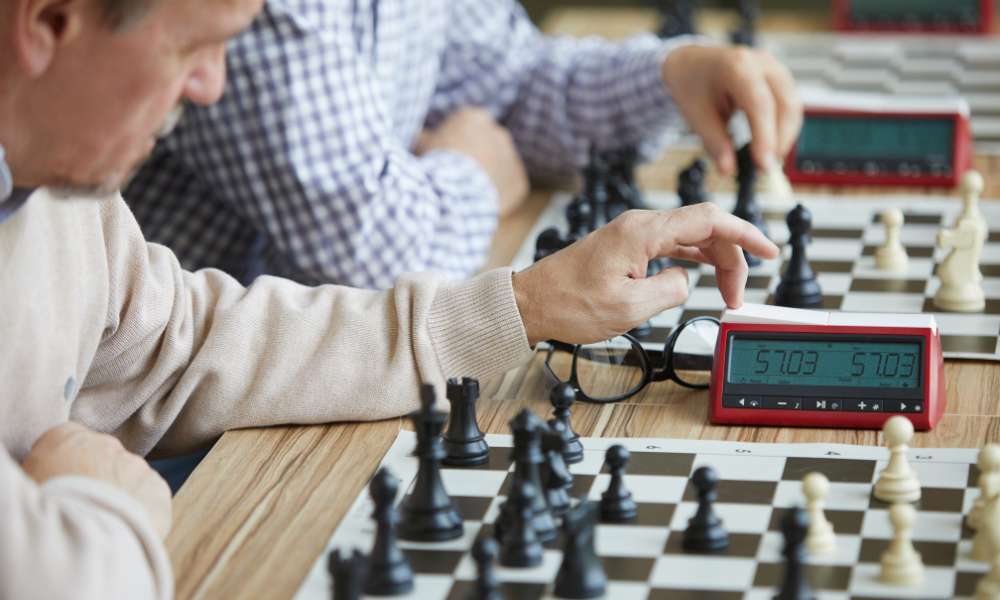Mastering the use of a digital chess clock can significantly enhance your game strategy and time management skills. Digital chess clocks are essential in tournaments and casual play to keep games moving efficiently. This guide will walk you through the basic functionalities of a digital chess clock, including setting the timer, understanding time controls, and utilizing delay and increment settings. Whether you’re a beginner looking to improve your game or an experienced player aiming to refine your skills, learning how to use a digital chess clock effectively can give you a competitive edge. Join us as we explore the benefits and techniques of using this vital chess accessory.
Understanding Digital Chess Clocks

Using a digital chess clock is straightforward and can significantly enhance your playing experience. To start, set the clock by programming the total time for each player. Most digital clocks feature buttons for setting minutes and seconds directly. After setting the time, choose any additional features like increments or time delay, which help manage the pace of the game. Once configured, press the start button to begin the timer. Players press their button after making a move, which stops their timer and starts their opponent’s. By effectively managing their time, players can improve decision-making under pressure, making the digital chess clock a vital tool in both casual and competitive play.
Setting Up Your Digital Chess Clock

Setting up your digital chess clock is a straightforward process that begins with powering the device. If your clock uses batteries, open the battery compartment, usually located on the back or bottom of the clock, and insert the appropriate batteries ensuring the correct orientation as indicated. For rechargeable models, connect the clock to a power source using the provided charging cable until it is fully charged. Once powered, turn on the clock by pressing the power button, often found on the side or top of the unit.
In the initial configuration, you need to set the current time and select the default time control settings using the menu and navigation buttons—usually ‘Set’, ‘Plus’, and ‘Minus’. These buttons allow you to scroll through options and choose your desired configurations, such as game type or duration. Ensuring you correctly execute these initial steps will enable the clock to function properly during gameplay, providing a reliable and efficient way to manage game time.
Programming Time Controls
Mastering the use of a digital chess clock can significantly enhance your gameplay by allowing you to program specific time controls. These devices come equipped with user-friendly interfaces that make setting up durations for each player straightforward. Whether you’re setting a simple countdown, adding time increments after each move, or implementing complex multi-phase settings for tournaments, digital chess clocks are designed to meet diverse requirements. By familiarizing yourself with your clock’s settings and features, you can ensure fair play and keep the game challenging and engaging. Learn how to program your digital chess clock effectively to elevate your chess experience.
Common Time Control Settings Used in Tournaments

Digital chess clocks are crucial in managing time in chess tournaments. Understanding common time control settings can significantly enhance your competitive play. These settings include Blitz, Rapid, and Classical, each providing unique challenges. Blitz games usually allot 3 to 5 minutes per player, making quick decision-making essential. Rapid settings offer around 15 to 25 minutes, requiring a balanced approach to speed and strategy. Classical games, often seen in major tournaments, provide over an hour per player, allowing for deep strategic planning. Learning to set and operate a digital chess clock with these time controls is key to optimizing your performance and adapting to various levels of tournament play.
Advanced Features and Custom Settings

Digital chess clocks are equipped with advanced features that cater to the needs of both serious training and complex tournament scenarios. One such feature is the ability to program multiple time controls, allowing for different phases of a game to have separate time limits. This is particularly useful in tournaments where the structure might require more time for the initial moves and less as the game progresses. Additionally, many clocks come with memory functions that can store preferred time settings, making it easy to switch between different game formats without reprogramming the clock each time. To customize these settings, access the clock’s advanced menu, usually navigated through a combination of the ‘Mode’ and ‘Set’ buttons.
Here, you can set up phases of the game with specific time controls—like a long deliberation phase followed by a quicker endgame phase—and save these settings into one of the memory slots. This customization allows players to simulate various tournament conditions or tailor their practice sessions to focus on particular aspects of their game, enhancing their strategic preparation and responsiveness under different time constraints.
Troubleshooting
Digital chess clocks, while designed for reliability and precision, can sometimes encounter issues that affect their functionality. Common problems include the clock failing to start, display errors, or buttons not responding.For a quick fix, begin by ensuring that you properly power the clock—check if the batteries need replacing or if you securely plug in the power cord. If the display glitches or freezes, a simple reset often resolves the issue; you can typically do this by pressing a reset button found on the clock or by removing and reinserting the batteries. If buttons don’t respond, ensure they aren’t stuck and gently clean around them to remove any dirt or debris causing the issue.
However, if these steps do not resolve the issues, or if the clock experiences repeated malfunctions, it may be time to consult the user manual for more specific troubleshooting guidance or contact professional support. For technical issues beyond basic troubleshooting, especially with internal components, professional repair or replacement might be necessary to ensure the clock operates correctly in competitive settings.
Final Thought
Mastering how to use a digital chess clock is essential for any chess enthusiast looking to enhance their game experience and comply with competition standards. By familiarizing yourself with the settings and functions of your digital chess clock, you can manage your time effectively, making strategic decisions that could lead to victory. We encourage you to practice setting and using your clock regularly to become comfortable with its features. Remember, a well-used chess clock can be a significant advantage in the game. Share your experiences and tips on using digital chess clocks in the comments below to help others improve their skills!

